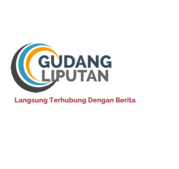- Tesla's Robotaxi launch is set for June.
- A successful launch is key to the company's future and investors' confidence in the company.
- Elon Musk and Tesla have a history of missing deadlines, but this one is a do-or-die moment.
After more than a decade of hype, Tesla is only a few months away from its Robotaxi launch.
It may be the one deadline the electric vehicle maker and its CEO Elon Musk can't afford to miss.
Tesla is famous for blowing past key dates. Investors even coined the term "Elon Time" to describe the phenomenon. But Robotaxi is different. The company has been staring down a tanking stock price, a brand crisis, and angst over Musk's work with the Department of Government Efficiency. It has also positioned fully autonomous driving — of which Robotaxi is a crucial arm — as central to its profitability.
A missed deadline would make a historically bad year even worse. A timely and successful Robotaxi launch, on the other hand, would make good on years-long promises, quell investor jitters, and signal that it can keep up with fierce competition.
During Tuesday's earnings call, Musk reiterated the company's commitment to the June launch. He's "laser-focused" on it, he said, adding that the future of the company hinges on its ability to bring autonomous vehicles to the market. While its automotive revenue fell 20% during the first quarter, its stock was up more than 7% this morning following Musk's commitment to the Robotaxi release and his plans to step back from DOGE.
Robotaxi is Musk's biggest bet yet
Musk has repeatedly emphasized the importance of self-driving tech, warning that Tesla is worth "virtually zero" without it.
Musk has also made several moves in recent years to distance Tesla from traditional automakers by positioning it as a tech company. Unlike traditional automakers, Tesla hasn't tried to keep up with continually refreshed models and new releases. Instead, it has chosen to pour resources into its Autopilot division.
Investors are expecting follow-through. "Musk needs to lay out for investors the timing/rollout of unsupervised FSD in Austin this summer," noted Tesla bull Dan Ives said in an analyst note on Sunday.
Tesla has yet to set a date for the event in June in Austin. On Tuesday, Musk said people would be able to pay to ride in Model Ys equipped with self-driving technology. He added that the company has not decided yet how many vehicles will be available during the initial launch, but that it could start with 10 to 20 vehicles.
We'll "watch it carefully to scale it up rapidly after that," Musk said. "We want to make sure we're paying very close attention."
The company did not respond to a request for comment.
Tesla initially unveiled its Cybercab in October. The event disappointed some investors and sent Tesla stock down 10% the day after the event, but shares quickly rebounded.
Within Tesla, there has been little information about the upcoming release. Unlike the October event, some workers told Business Insider they are unaware of when the event will take place within June or how it will be organized.
Missed deadline after missed deadline
Musk has joked about being "pathologically optimistic."
"I always bite off more than I chew (sigh) & then sit there with puffed out cheeks like a squirrel that ate too much," he said in an X post in 2023.
Most of Tesla's launches have faced optimistic deadlines. The Model X was released more than a year after Musk had promised; it also took longer than Musk predicted to scale Model 3 production.
Some of the carmaker's more recent products have had similar delays. The Tesla Semi began limited deliveries three years later than the carmaker predicted. The Cybertruck was delivered two years late with a price tag $20,000 higher than initially promised for its cheapest model. And Tesla's $25,000 EV and the second-generation Roadster have overshot deadlines with no firm delivery date in sight.
Several of Musk's biggest promises have revolved around Tesla's self-driving efforts. Musk said in 2015 that Teslas would be fully autonomous within two to three years. In 2018, Musk said full self-driving was "a year away," and in 2019, he said it would be complete by the end of the year.
Tesla first released a beta version of what it calls "Full Self-Driving" software in 2020. Despite its name, it requires a licensed driver to operate the vehicle and functions largely as a driver-assist feature that can change lanes, stop at traffic lights, and execute turns.
During Tesla's fourth quarter earnings call in January, Musk joked that he was the "boy who cried FSD."
While investors have been able to brush off missed deadlines in the past, they may be nearing a breaking point. The carmaker is facing one of its most precarious moments since its Model 3 ramp-up, when Musk said Tesla narrowly skirted bankruptcy.
On Tuesday, Tesla reported its worst quarterly results since 2021. The brand has faced a series of large-scale protests over the past few months and sales have continued to slip.
Musk dismissed concerns about the carmaker on Tuesday. Tesla has been on the "ragged edge of death" many times in the past, he said.
"This is not one of those times. We're not on the ragged edge of death, not even close," he said.
Though he anticipates "some unexpected bumps this year," Musk — as ever — said he remains optimistic.
Do you work for Tesla or have a tip? Contact this reporter via email at [email protected] or Signal at 248-894-6012. Use a personal email address and a nonwork device; here's our guide to sharing information securely.
















